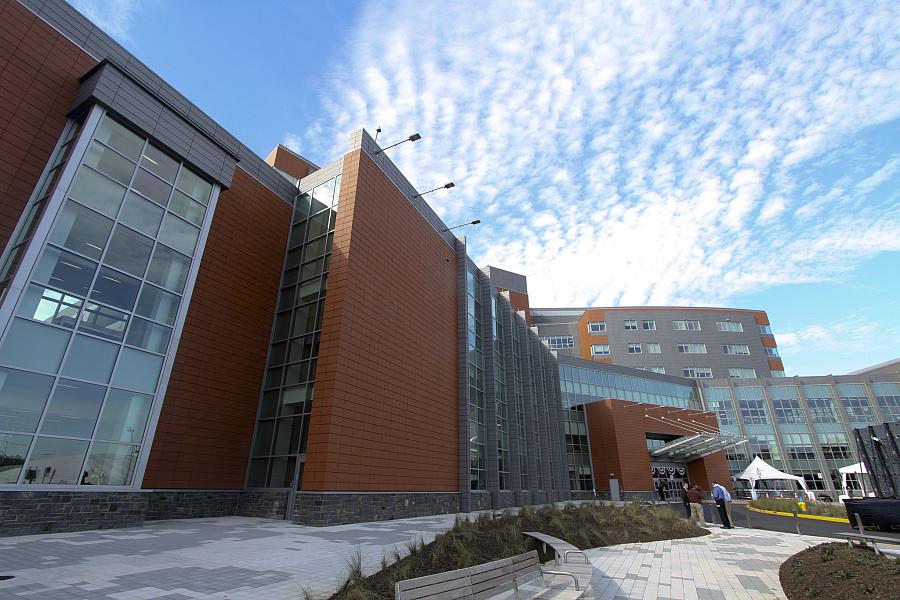Bed Count: Should hospitals be headquarters for health care?

Hospitals aren't always as important as we think in shaping health.
When I started the health care beat, I assumed I would spend a lot of time in hospitals. Most of my time up until then had been writing about local governments and schools. Hospitals seemed like super-deluxe city halls with schools built right into them. Flags flying outside. Named after someone important. Weren’t these the headquarters for a community’s health care needs?
Not necessarily. Once I walked into some of these truly impressive buildings, I found them to be like a ski resort in the summer. Room after room was empty. Some floors seemed devoid of people entirely and inaccessible. The number of people who could be admitted to the hospital – known as the bed count – was anywhere from around 50 to more than 500. And, in some cases, only half of those beds were full at any given time.
It always seemed odd to me that often another hospital was a 10-minute drive away. And also half empty. Many clinics and outpatient surgery centers were even closer.
I soon found that I spent far less time in hospitals than I had anticipated because health care happens all over the place. It’s a bit like city government, where the citizens themselves – in a well-functioning community – are part of the structure and process. They follow the speed limit signs and so make streets safer. They report crimes. They recycle.
So when I read a recent spate of articles about the damaging effects of hospital closures, I wondered if reporters are putting too much emphasis on the buildings and not enough emphasis on the overall health of the community and how that health profile can be influenced. I’m going to write about some of the issues raised by hospital closures in a series of posts because the issues are complex. Let’s touch briefly on recent questions raised by media coverage.
Do hospital closures hurt low-income communities more than high-income ones? Sean Hamill at the Pittsburgh Post-Gazette did a terrific job on his National Health Journalism Fellow and Dennis Hunt Journalism Fund project describing how low-income communities have seen a series of hospital closures. Government officials in the story argue that the poor are being hurt every time a hospital closes. In North Carolina, community leaders have started a Save Our Hospital movement. But one could also argue that the problems with health care for poor communities start long before someone living below the poverty line is admitted to a hospital. It starts with where they live. What they eat. Whether they smoke. Whether they get regular checkups. Isn’t it really those issues – and heading off “upstream” problems at their source – that can make more of a difference?
Do emergency room closures kill people? Karen Kaplan at the Los Angeles Times wrote about a study recently that pretty strongly answered “yes.” But the effect of an ER closure was actually much smaller than you might have guessed. This ties back to the question above. Are hospitals the main way we should be addressing community health care needs, or do we need to think more broadly?
What role should companies outside the traditional health care realm play? Rachel Abrams at the The New York Times wrote about Wal-Mart’s “aggressive push to become a one-stop shopping destination for medical care.” Reporters love Wal-Mart stories because the company’s business practices provide endless fodder for stories that incite little bursts of outrage among people who don’t shop at Wal-Mart. In a way it’s not that different from having a strip mall with a grocery store, sporting good store, hardware store, and clinic. Except now everything is all in one building (and owned by one company). Yet it creates handwringing, of course, because Wal-Mart is involved. Would it feel better if it were a company known for charitable work, like Patagonia?
I’ll explore these questions and more in my “Bed Count” posts. Send me your thoughts via Twitter @wheisel or to askantidote [at] gmail.com.
Photo by U.S. Army Corps via Flickr.

